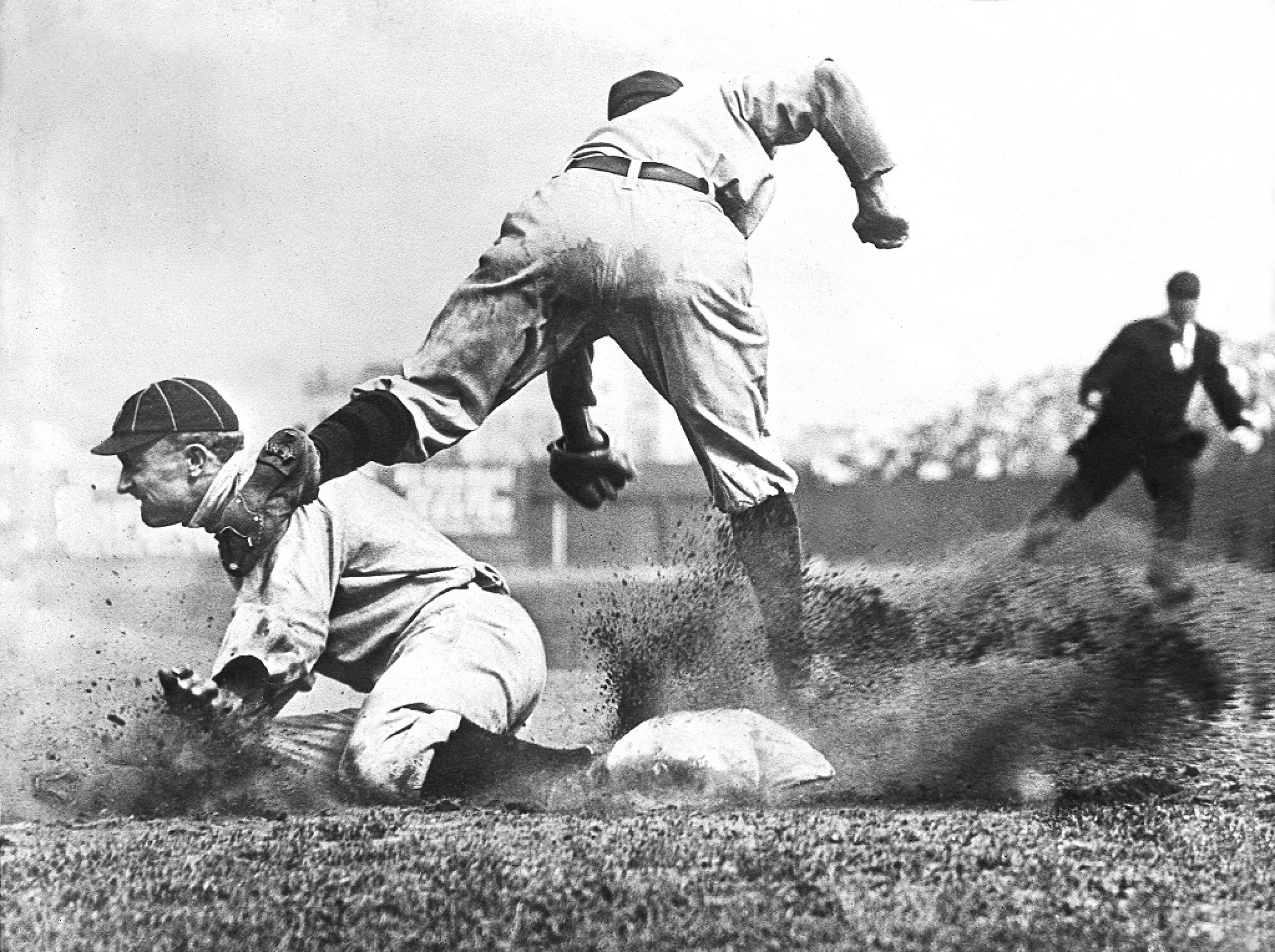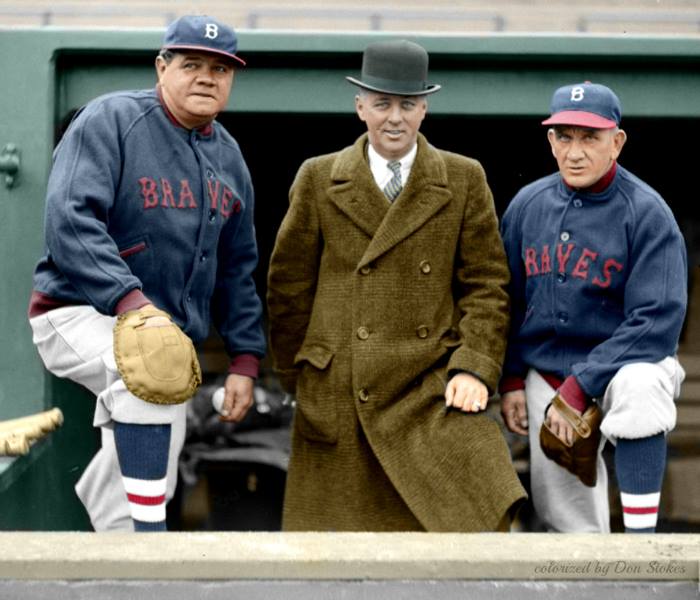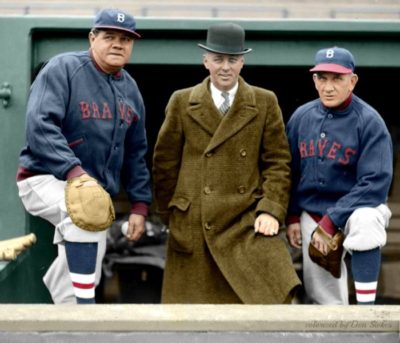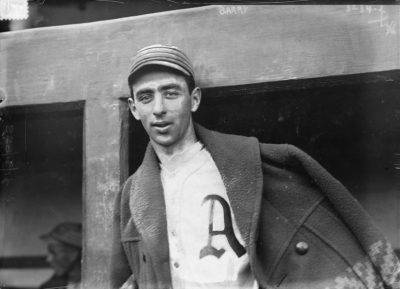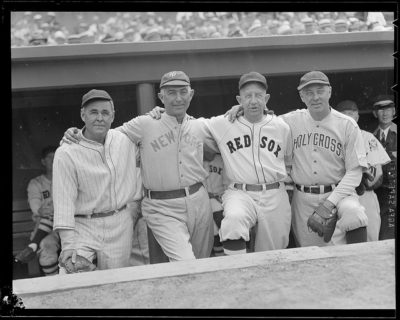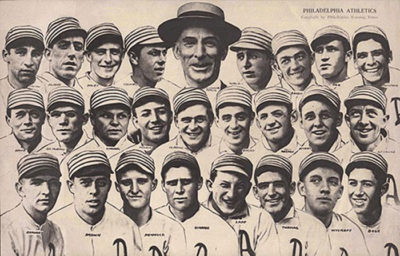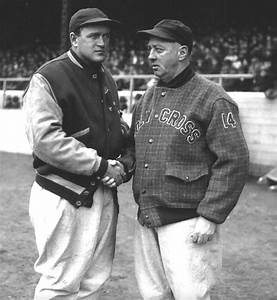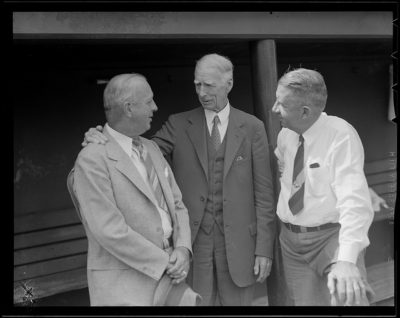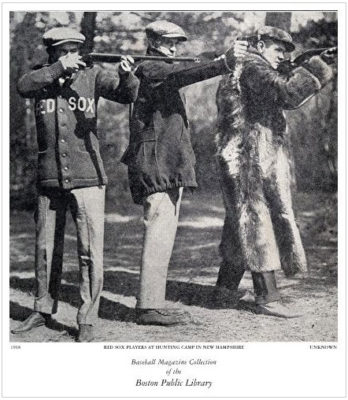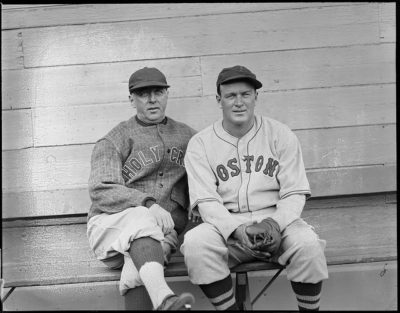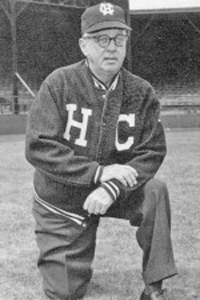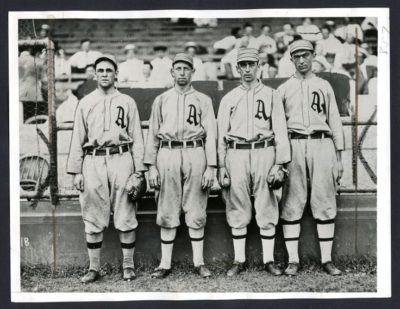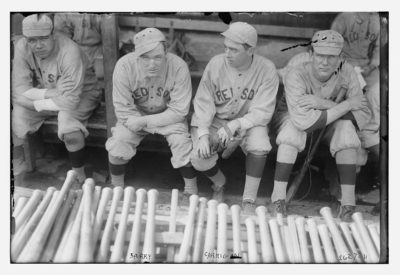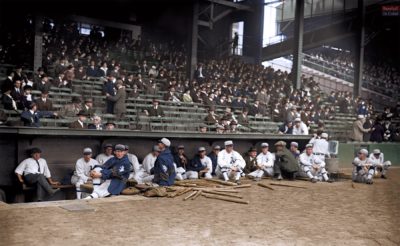Baseball History Comes Alive Now Ranked #2 by Feedspot Among All Internet Baseball History Websites and Blogs!
Guest Submissions from Our Readers Always Welcome!
Subscribe to Baseball History Comes Alive! to receive new posts automatically
Jack Barry and the $100,000 Infield Photo Gallery
Click on any image below to see photos in full size and to start Photo Gallery:
The Latest From Our Resident Baseball Artist, Don Stokes!
In this beautiful colorization by Don, we see the great Bambino in 1935 at the tail end of his career with the Boston Braves. Check out the Babe’s nifty first baseman’s mitt! In the center is a dapper-looking Jack Barry, a former teammate on the World Champion 1915 Red Sox; and on the right is Hall-of-Famer Rabbit Maranville, looking rather aged for an active player. This was also Rabbit’s last year in the majors.
We post a lot about the Babe of course, and even prankster Rabbit Maranville gets his share of ink, so here’s a little bit about Jack Barry, who’s best remembered as the shortstop for the Philadelphia Athletics’ famous “$100,000 Infield,” along with third baseman Frank “Home Run” Baker, second baseman Eddie Collins, and first baseman Stuffy McInnis.
The A’s vaunted infield unit is one of the most celebrated in baseball history. They were critical to winning pennants in 1910, 1911, 1913 and 1914; and World Series Championships in 1910, 1911, and 1913. Barry was also a member of two other World Series Championship teams with the Red Sox in 1915 and ’16, giving him five titles.
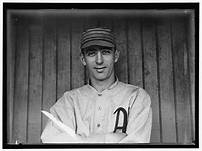
Jack Barry played 11 years in the majors (1908-1919). After seven seasons with the A’s, he was sold to the Red Sox as part of Connie Mack’s “fire sale” following the loss of the heavily-favored Athletics to the “Miracle Braves” in the 1914 World Series.
A defensive specialist, his offensive numbers are rather modest. Over his career, he hit just .243 with 10 home runs, and 532 RBIs. His best year was probably 1913, when he posted a .275 average, with 85 RBIs, three home runs, and a .349 on-base percentage, finishing ninth in MVP voting. In 25 post-season games, he hit .241 with seven RBIs. Acknowledged as the on-field leader with the Red Sox, he was named player-manager in 1917, leading the team to a 90-62 (.592) season and a second-place finish to the White Sox.
Like many other players from this era, World War I intruded on his career. Following the 1917 season he was called to active duty in the Navy and served for all of 1918. Returning to baseball for the 1919 season, he decided to retire after a poor year, rather than be sold away in another fire sale. this time by Red Sox owner, Harry Frazee.
Possibly his greatest claim to fame came after his playing days were over. He was named head baseball coach at Holy Cross in 1921 and continued in that position for the next 40 years. During his tenure, he posted the highest career winning percentage (.806) in collegiate history, and won the 1952 College World Series.
Barry was among the initial class of inductees to the American Baseball Coaches Association Hall of Fame in 1966. In 2007, he was an inaugural veteran inductee of the College Baseball Hall of Fame along with Lou Gehrig, Christy Mathewson, and Joe Sewell.
Jack Barry passed away in 1961 at age 73.
Gary Livacari
Photo Credits: Featured photo colorized by Don Stokes. Visit Don’s Face book page ; All others from Google search
Information: Excerpts edited from the Jack Barry Wikipedia page.
Check out my new book, now available on Amazon in paperback: “Memorable World Series Moments!”; All profits go to the Illinois Veterans Foundation
We are a participant in the Amazon Services LLC Associates Program, an affiliate advertising program designed to provide a means for us to earn fees by linking to Amazon.com and affiliated sites. Click here to view Amazon’s privacy policy
